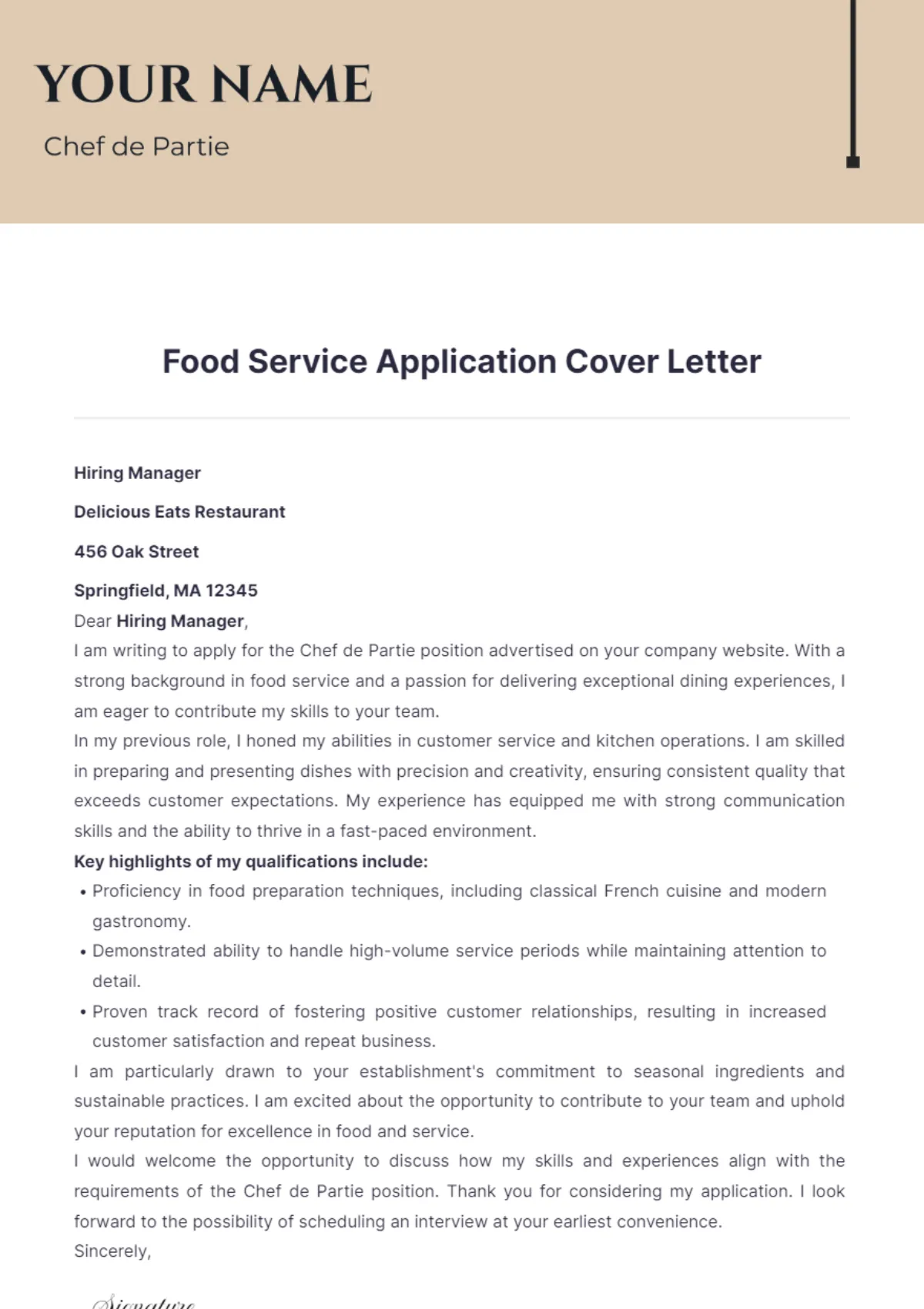Understanding the Food Industry Cover Letter Essentials
The food industry is a vast and dynamic sector, encompassing everything from food production and processing to distribution, retail, and hospitality. A well-crafted cover letter is your first step in making a lasting impression on potential employers in this competitive field. To effectively communicate your qualifications, you need to tailor your cover letter specifically to the food industry. This means understanding the industry’s unique demands, regulations, and the specific requirements of the job you are applying for. A cover letter is more than just a formality; it’s your opportunity to showcase your passion for food, your understanding of the industry, and your ability to contribute to a company’s success. It’s crucial to move beyond a generic cover letter and create one that demonstrates your genuine interest and suitability for the role. Remember, the food industry values candidates who are not only skilled but also passionate about food safety, quality, and innovation. Your cover letter should reflect these values, highlighting your commitment to excellence and your eagerness to contribute to a thriving food-related business. To make your cover letter stand out, ensure you highlight relevant skills, experiences, and a clear understanding of the target role and the company’s mission.
Highlighting Your Skills and Experience
Your cover letter is an excellent opportunity to showcase your abilities and previous work history. Begin by thoroughly reviewing the job description to identify the skills and experience the employer values most. Then, in your cover letter, highlight your achievements that directly align with these requirements. This could include, for instance, your experience in food safety regulations, quality control, or production management. Quantify your achievements whenever possible. Instead of just stating you ‘improved efficiency,’ specify by how much. For example, ‘Improved production efficiency by 15% through implementation of new process controls.’ This offers concrete evidence of your capabilities and their tangible impact. Additionally, demonstrate transferable skills, such as problem-solving, communication, and teamwork. These skills are highly valued across the food industry. Tailor each cover letter to the specific job, emphasizing the skills and experience most relevant to the position. For example, if applying for a role in product development, highlight your experience with recipe formulation, sensory evaluation, and market research. Consider showcasing your ability to adapt to new challenges, learn quickly, and work effectively under pressure. The food industry often involves fast-paced environments and strict deadlines.
Showcasing Relevant Food Industry Experience
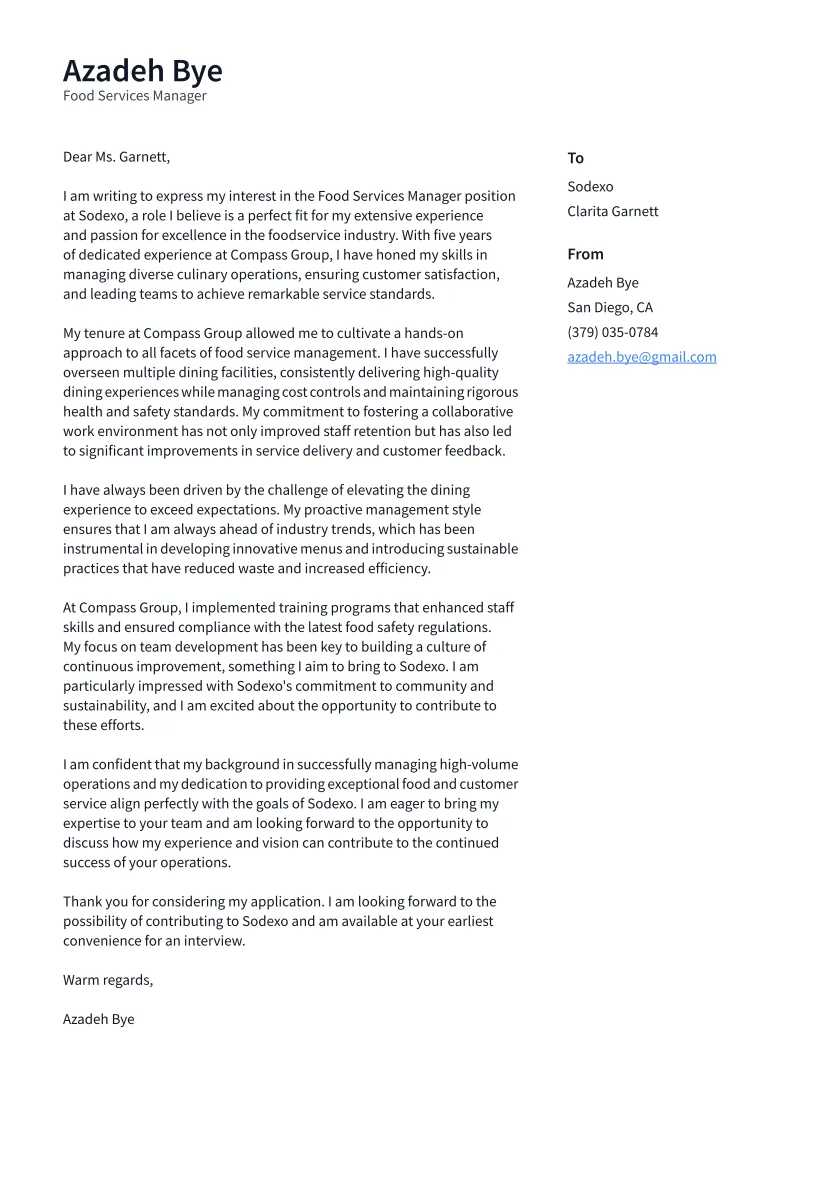
The food industry is unique, with its own set of challenges, regulations, and standards. Therefore, showcasing relevant industry experience is key. When describing your experience, provide details that demonstrate a deep understanding of the industry and the specific role you are seeking. Focus on achievements that are directly related to the job requirements. For instance, if you have experience in food safety, mention specific certifications, training, or projects that demonstrate your commitment to food safety standards. If your experience is in a related field, such as supply chain management or logistics, show how your skills are transferable and beneficial to the role. Include any knowledge of food processing techniques, packaging, or distribution methods that are relevant. It is also vital to highlight your experience with specific food products, such as dairy, meat, or baked goods. By demonstrating this targeted knowledge, you can show your understanding of industry best practices. Focus on any leadership roles or projects that you have taken on. This might include experience in supervising a team, managing projects, or taking the lead on initiatives to improve operations. The goal is to highlight how your skills and experience can directly benefit the potential employer.
Tailoring Your Cover Letter to the Job Description
The key to a successful cover letter is customization. Avoid using generic templates; instead, tailor your cover letter to each specific job you are applying for. Carefully analyze the job description. Note the key skills, qualifications, and experiences the employer is seeking. Make sure that you address each of these points in your cover letter, providing specific examples of how your experience aligns with their needs. Use the same keywords and phrases that appear in the job description to emphasize your suitability. Customize your cover letter to reflect the company’s values and culture. Research the company’s mission, products, and recent achievements. Demonstrate your understanding of their business and explain why you want to be a part of their team. Mention any specific projects or initiatives that align with the company’s goals, showing that you are interested and engaged. Show how you can contribute to the company’s success by highlighting your relevant skills and experience. Remember, a personalized cover letter is not just a document; it’s a targeted marketing tool that sells your qualifications to a specific employer.
Researching the Company and its Values
Before writing your cover letter, research the company thoroughly. Visit the company’s website, read their ‘About Us’ page, and check out their social media profiles. This will give you a sense of the company’s mission, values, and culture. Look for information about their products, target market, and recent achievements. Identify the company’s core values. Does it emphasize sustainability, innovation, or customer satisfaction? Make sure you use this information to tailor your cover letter. Align your skills and experiences with the company’s values, showing why you are a great fit. Understand the company’s industry position. Are they a leader in their field, or a small startup? Tailor your cover letter to match their position. If the company has a strong online presence, look for information about the company’s culture and any recent news or press releases. This information can help you craft a more compelling cover letter. By showcasing this knowledge, you will demonstrate your genuine interest in the company and the role. It shows the hiring manager that you have taken the time to learn about their organization and that you are enthusiastic about becoming a part of their team.
Using Keywords Strategically
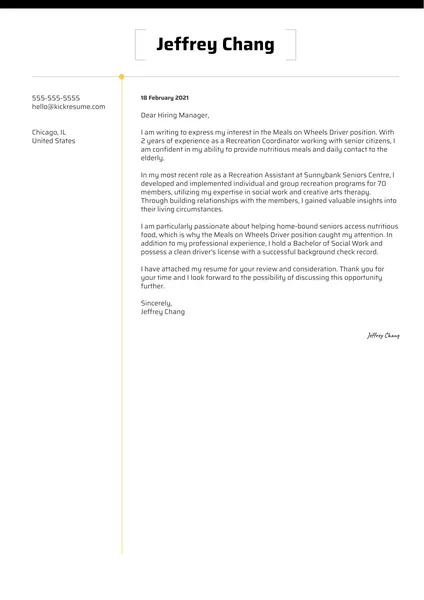
Keywords play a crucial role in modern job applications, especially in the food industry, where companies often use applicant tracking systems (ATS) to screen resumes and cover letters. Carefully review the job description and identify the key skills, qualifications, and industry-specific terms the employer is seeking. Strategically incorporate these keywords throughout your cover letter. Ensure that you use the keywords naturally. Don’t stuff them into the document; instead, use them in context. For example, if the job description mentions ‘food safety protocols,’ mention your experience with these protocols. Highlight relevant certifications, software proficiency, or specific technical skills. Using keywords in your cover letter ensures that your application gets noticed by both the ATS and the hiring manager. This increases your chances of passing the initial screening and getting an interview. When using keywords, consider the different variations. You might use the same term or phrase differently to make sure the ATS recognizes your application. This proactive approach ensures your qualifications are clear and visible to the potential employer.
Formatting Your Cover Letter for Readability
A well-formatted cover letter is easy to read and visually appealing. Begin by choosing a clear, professional font such as Arial, Times New Roman, or Calibri. Use a font size of 11 or 12 points for readability. Keep the layout clean and uncluttered. Use headings, bullet points, and white space to break up the text and make it easy to scan. Ensure that the paragraphs are concise and to the point. Aim for 3-4 sentences per paragraph. Proofread your cover letter carefully to check for errors in grammar, spelling, and punctuation. A well-formatted cover letter shows that you pay attention to detail. Use a professional tone. Address the hiring manager by name, if possible. Avoid slang or informal language. Maintain a consistent format throughout the document. Use the same font, font size, and spacing throughout your cover letter. This makes it easier to read and understand. These steps will help you create a polished and professional cover letter that makes a great first impression on potential employers.
Choosing the Right Font and Layout
The visual elements of your cover letter can significantly impact the reader’s impression. Select a professional and easy-to-read font such as Arial, Times New Roman, or Calibri. Stick to a font size between 11 and 12 points. This ensures that your cover letter is accessible and visually appealing. Choose a layout that is clean and easy to follow. Use clear headings and subheadings to structure your content. Use bullet points to highlight key skills and achievements, making it easier for the hiring manager to scan your letter. Ensure that you use adequate margins and spacing to create a visually balanced and uncluttered document. Maintain a professional and consistent tone throughout the letter. The layout should match the formatting of your resume. This consistency demonstrates your attention to detail and professionalism. A well-designed cover letter makes a positive first impression and shows the hiring manager that you value the details.
Proofreading and Editing Your Cover Letter
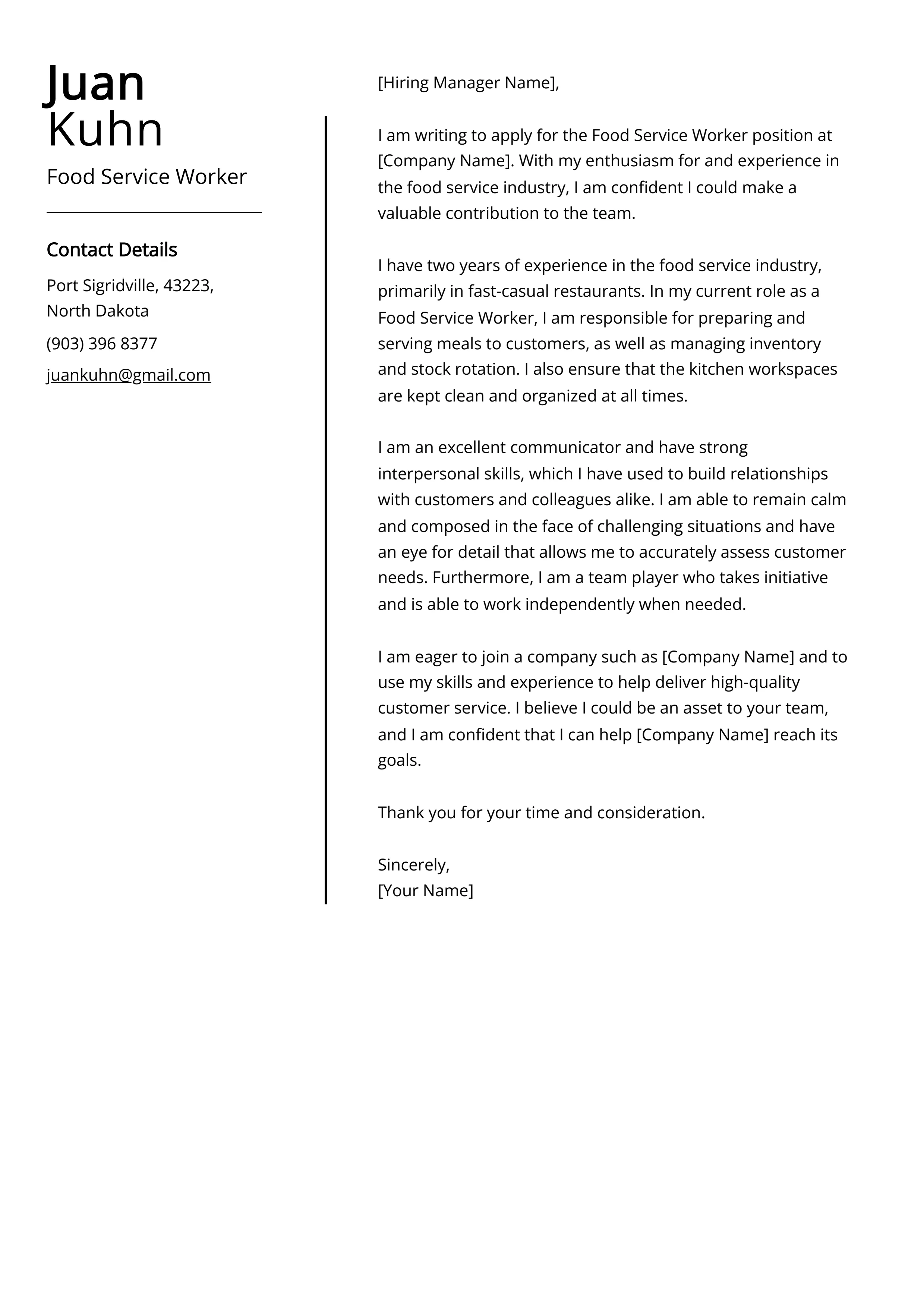
Proofreading is a non-negotiable step in the cover letter writing process. Before you submit your cover letter, carefully check for errors in grammar, spelling, and punctuation. These errors can detract from your professionalism and undermine your credibility. Use a spell-checker and grammar checker. But do not rely on these tools alone. Read your cover letter aloud to catch any errors you might have missed. Ask a friend, family member, or career advisor to review your cover letter for you. A fresh pair of eyes can often spot mistakes that you might overlook. Check the content for clarity, conciseness, and accuracy. Make sure that your cover letter is tailored to the specific job you are applying for and the company’s needs. Ensuring your cover letter is error-free is essential, as it reflects your attention to detail and your commitment to excellence. It shows that you take your job application seriously and that you are willing to invest the time and effort to create a professional document.
Writing a Compelling Opening and Closing
The opening and closing paragraphs of your cover letter are critical. They have to grab the reader’s attention and leave a lasting impression. Your opening paragraph is your opportunity to introduce yourself, state the position you are applying for, and immediately convey your enthusiasm and passion for the role. It should be brief, engaging, and highlight your most relevant skills or experiences. The closing paragraph offers a chance to summarize your key qualifications, reiterate your interest in the position, and include a clear call to action. Always include a call to action, which clearly indicates your desire for an interview and provides your contact information. A strong opening and closing will set your cover letter apart and increase your chances of getting noticed by the hiring manager. Focus on crafting these sections carefully to create a strong impression from start to finish.
Crafting a Strong Opening Paragraph
The opening paragraph of your cover letter sets the tone. It creates the first impression. Start with a captivating statement that captures the reader’s attention. You can mention how you learned about the job or what specifically excites you about the opportunity. State the position you are applying for clearly. Then, briefly highlight your most relevant skills or experiences that align with the job requirements. Keep it concise and to the point. Avoid generic phrases or clichés. Demonstrate your genuine interest in the company. Make sure you customize the opening paragraph to reflect the specific job description. If you are referring to a contact, make sure you use their correct name. Aim to make your opening paragraph both engaging and informative. This opening sets the tone for the rest of your cover letter. It will get the hiring manager interested in reading further.
Ending with a Call to Action
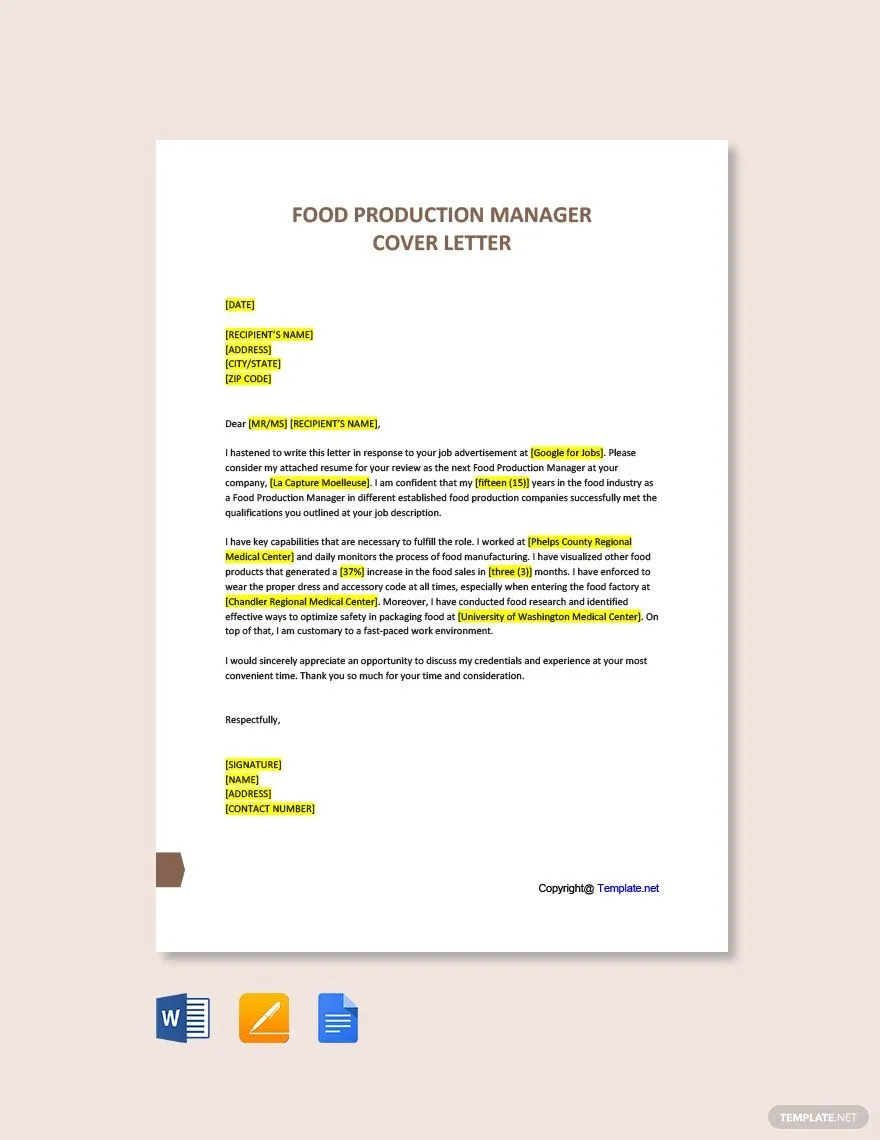
The closing paragraph is your final opportunity to make a positive impression. Always end your cover letter with a call to action. This makes it clear you want an interview. State your desire to discuss your qualifications in more detail and reiterate your enthusiasm for the position. Provide your contact information, including your phone number and email address. It is also acceptable to provide a link to your LinkedIn profile. Thank the hiring manager for their time and consideration. Keep the tone professional and enthusiastic. Reiterate your key strengths and how you can contribute to the company’s success. Make sure that your call to action is clear and specific. The closing paragraph should serve as a final reminder of your qualifications and your eagerness to take the next step in the hiring process. The goal is to encourage the hiring manager to contact you for an interview, which will allow you to showcase your abilities and passion in person.
